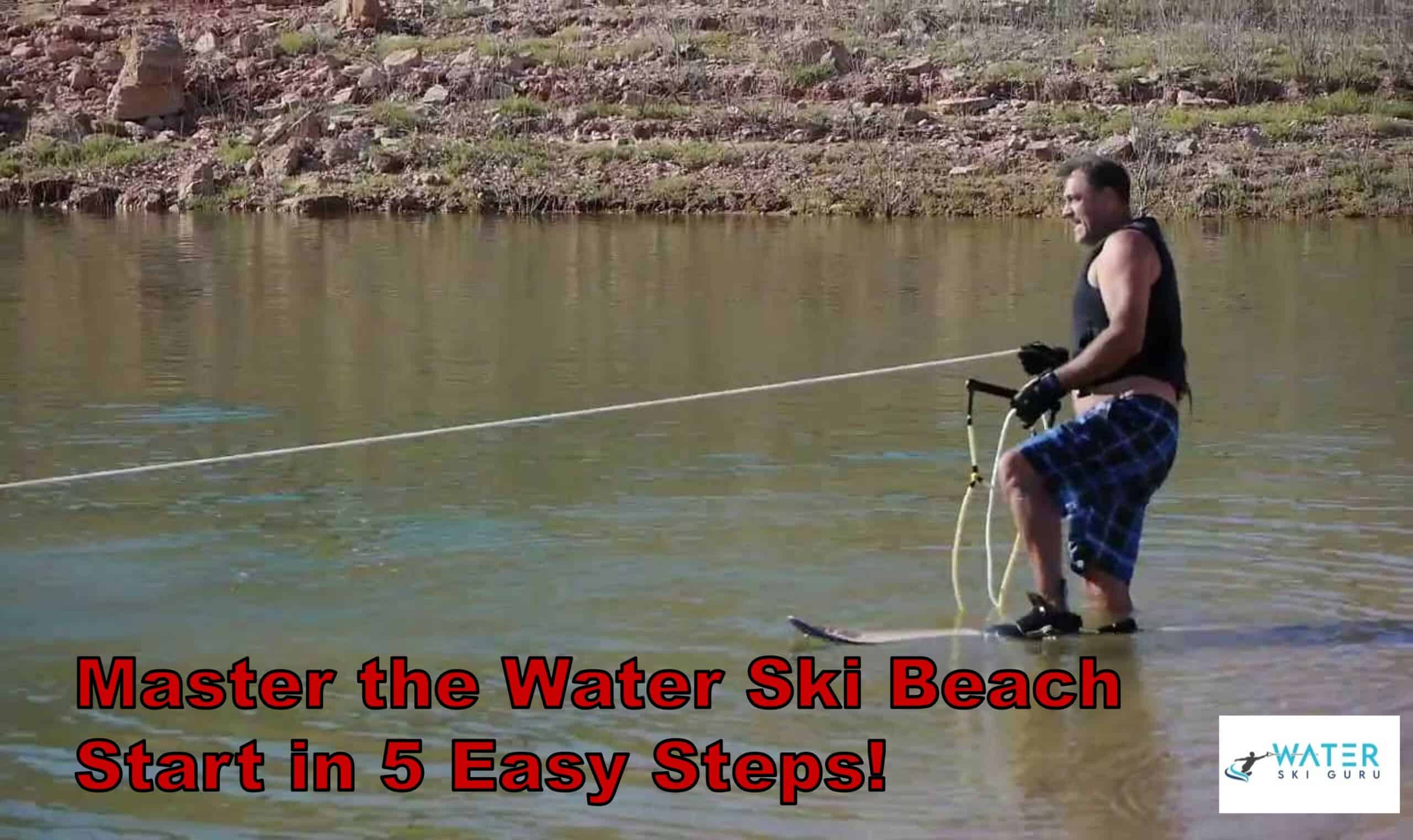Have you ever watched water skiers gracefully glide across the water, effortlessly maneuvering their way around the lake? It’s a sight to behold, and one that many of us dream of experiencing for ourselves. But where do you start? How do you go from being a complete beginner to mastering the art of water skiing?
Well, I’m here to tell you that the answer lies in mastering the water ski beach start.
Now, I know what you’re thinking: ‘Wait a minute, isn’t the beach start the hardest part of water skiing? I’ve heard horror stories about people face-planting into the water.’
But here’s the truth: mastering the water ski beach start is not only achievable, it’s also one of the quickest and most efficient ways to get up on a single ski. In just five easy steps, you can learn how to transfer your weight from one leg to the other, feel the tension on the rope, and take off smoothly. And the best part? It’s a technique that can be practiced on the beach before even getting into the water.
So, if you’re ready to take your water skiing skills to the next level, read on to find out how to master the water ski beach start in five easy steps.
Technique Tips
To tackle the technique tips for a water ski beach start, I suggest standing strong and stable in knee-deep water. Smoothly transfer weight from grounded foot to ski as the boat idles, and hold the handle close to my hips with a firm grip. It’s important to keep my body fairly rigid and flex my front knee, while keeping my rear foot gently placed on the back of the ski.
Timing is crucial, so I wait for the boat to move slowly and feel the tension on the rope in my fingertips before transferring my weight onto the ski. Trick variations can add excitement to a beach start, but it’s important to master the basics first.
Common mistakes include leaning too far back or forward, not keeping the ski straight, and not holding the handle properly. Trailing the foot approach can provide additional stability, but it’s important to keep the rope positioned in line with the middle of my body to the left of the ski.
Practicing the beach start position on the sand before getting into the water can also help with mastering the technique.
Ideal Conditions
In my experience, the best time to water ski is during the early morning or late afternoon when the conditions are usually optimal. The water is calmer, and there’s usually less wind, making it easier to maintain balance on the ski.
Additionally, the sun isn’t as strong during these times, which means less glare and better visibility. When it comes to weather factors, it’s important to keep an eye on the wind and temperature.
High winds can create choppy water conditions, which can make it difficult to maintain balance on the ski. On the other hand, extremely hot temperatures can lead to dehydration and fatigue, negatively impacting your skiing performance.
It’s important to take breaks and stay hydrated, especially on hot days. By paying attention to these factors and choosing the best times to ski, you can improve your chances of mastering the water ski beach start.
Expert Author Tips
As someone who has been skiing for decades, I can tell you that one of the most important things to remember when starting on a single ski is to maintain proper body position throughout the entire process. This means keeping your weight centered over the ski, with your arms straight and elbows bent at a 90-degree angle. Another key point is to keep your back knee locked into your front leg, especially if your ski doesn’t have a rear boot fitting.
To help you further improve your beach start technique, I’ve compiled a list of common mistakes and advanced variations in the table below. By avoiding these mistakes and practicing the advanced variations, you can take your skiing to the next level and impress your friends and family with your skills on the water. Remember, mastering the beach start takes time and patience, but with practice and dedication, you can become a pro in no time.
| Common Mistakes | Advanced Variations |
| Looking down at the ski | Adding a jump to your start |
| Weight too far forward | Switching the ski to your other foot mid-start |
| Not transferring weight quickly enough | Starting with only one hand on the handle |
| Bending at the waist | Starting with your ski facing the wrong way |
| Starting with your arms too high | Starting with your ski already in the water |
| Letting go of the handle too early at the end of the run. |
Frequently Asked Questions
What is the ideal age to start water skiing and when is it too late to start?
Starting age for water skiing varies, but children as young as 4 can learn. Benefits of starting later include more developed muscles and coordination. It’s never too late to start as long as you have the desire to learn and the proper instruction.
How important is physical fitness for water skiing and what muscles are primarily used?
Physical fitness is crucial for water skiing, as it requires a combination of strength, endurance, and balance. The primary muscles used are the legs, core, and upper body. Neglecting fitness can lead to fatigue, injury, and poor performance. It’s essential to prioritize fitness to excel in the sport.
What are some common mistakes beginners make when attempting a beach start?
Common mistakes when attempting a beach start include improperly positioning the ski, not transferring weight correctly, and holding the handle too high or low. Tips include practicing on the beach and improving technique to avoid injury. Practice and skill are key to success.
How long does it typically take for someone to become proficient at water skiing?
Becoming proficient at water skiing depends on individual factors such as athleticism and prior experience. However, the benefits of water skiing, such as improved balance and strength, can accelerate progress. Tips for faster progress include finding a skilled driver and practicing choreography and timing.
Are there any recommended stretches or warm-up exercises to do before water skiing?
Pre-ski stretches and warming up are crucial before water skiing. Dynamic stretching and light cardio can help prevent injuries and improve performance. Benefits include increased flexibility, blood flow, and range of motion. Always consult a professional for specific recommendations.

